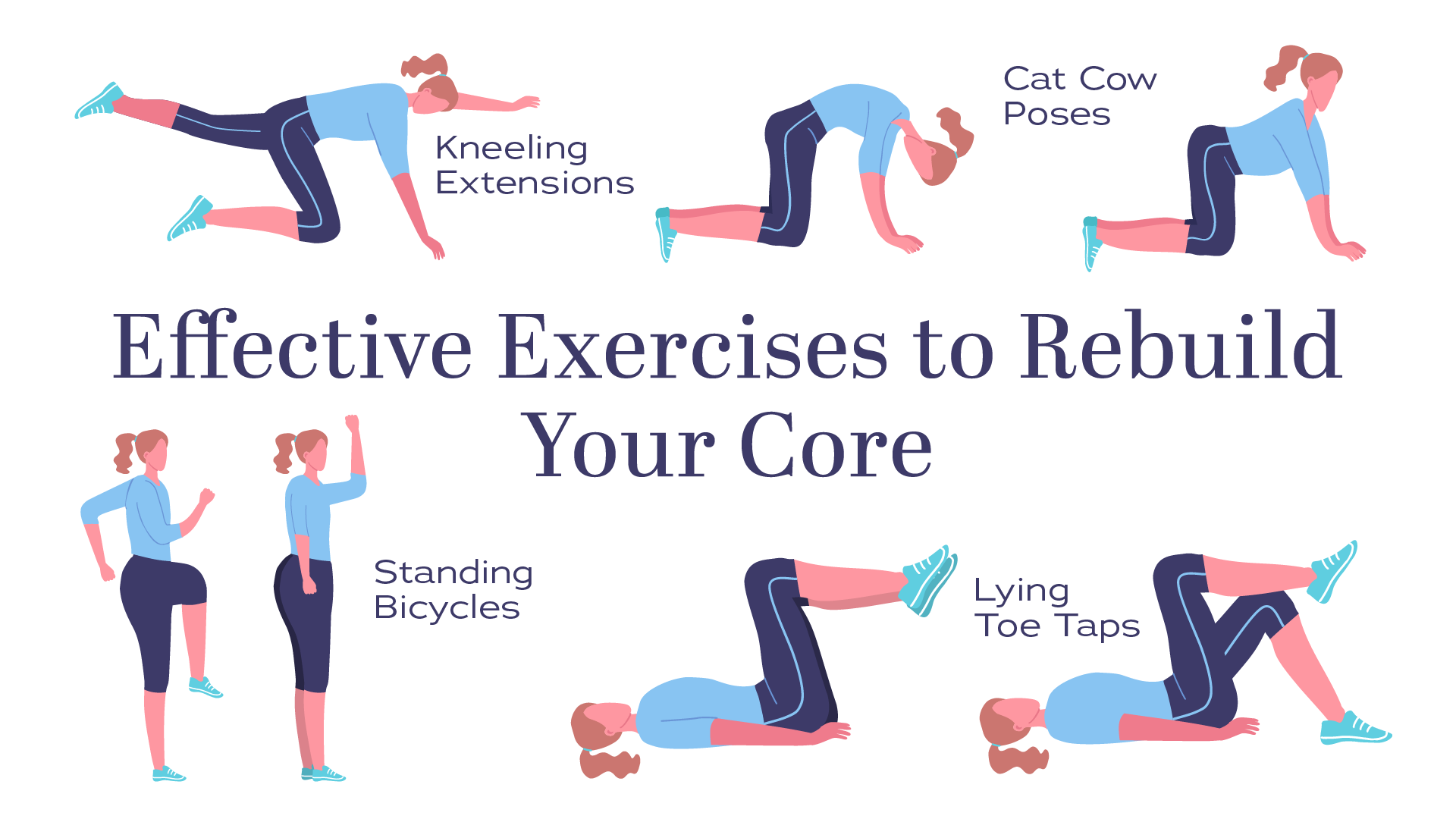Grace.
That’s the word you must keep repeating to yourself during the season of life with a newborn baby. Forget perfection and looking like you have it all together. You must give yourself plenty of grace and margin of error to recover and adjust to motherhood.
Being a mom is a selfless job. A 24/7, always-on-call job. A messy job. And a very special, wouldn’t-trade-it-for-the-world job! It is also a season that passes in the blink of an eye. (Or is it the lack of sleep that makes it seem like a complete blur?)
Giving yourself grace during the first 6 months after having a baby is very important. After all, it took 10 months to gain the baby weight; it will not come off in two. With the sleepless nights and relentless demand it takes to care for a newborn, focusing on getting back into “pre-mommy” shape will take a little time and patience.
Be Realistic
Most women lose about 13 pounds right after giving birth. Of course, this is the baby, the placenta and amniotic fluids. The additional “baby weight” won’t disappear so quickly. This is why gaining the appropriate recommended amount of weight during your pregnancy is so important. When you gain way too much weight during the pregnancy, the road back to a healthy weight will take all the longer.
So what is a realistic weight loss goal? The Academy of Nutrition and Dietetics recommends a slow, gradual weight loss of 1 pound per week (or an average of 4 pounds per month) as a safe goal for new moms who want to return to their pre-pregnancy weight.
For example, if you gained 35 pounds during pregnancy then it would realistically take about 6 months to return to your pre-pregnancy weight. Keep in mind, that once you reach that weight goal, your body may not look exactly as it did before. Some women notice their stomach is softer or their hips are slightly wider…and that’s OK! Your body has been through a lot and praise the Lord for the amazing ability to carry a new life into this world! That is no easy feat!
Breastfeed
The American Academy of Pediatrics recommends exclusive breastfeeding for the first six months if possible. It’s the perfect thing for both baby and mom! Not only does breastfeeding help you lose weight because it burns 500-600 additional calories per day, it also stimulates certain hormones that help shrink your uterus back down and make you feel calmer.
You might be surprised to learn that your nutrient needs are higher in the first 9 weeks postpartum if you are breastfeeding than while you were pregnant! After all, you are still growing a baby; it’s just outside the womb now.
It is safe to lose weight while breastfeeding, however most women need at least 1800 calories per day to avoid seeing a drop in milk supply. Avoid strict fad diets, dieting supplements, or restrictive meal plans. Instead, listen to your body’s hunger cues and follow these healthy eating tips below. 
Healthy Eating Fundamentals:
- Drink plenty of water. Your urine should be light in color.
- Limit caffeine to less than 200 mg per day.
- Prioritize nutrient-dense foods and eat a variety of food groups each day.
- Limit “empty calories” such as sweetened beverages, desserts, candy, fried foods, ultra-processed “snack” foods, and added oils or butter.
- Increase your fresh vegetable and fruit intake. Fill half your plate with vegetables at lunch and dinner, and snack on fresh fruits and veggies if you are hungry between main meals.
- Include a healthy protein source at each meal such as beans, soy, eggs, fish, lean meat, low fat dairy, nuts or seeds.
- Choose high fiber whole grains and starchy vegetables versus refined grains. Think oatmeal, quinoa, beans, squash and sweet potatoes!
- Include unsaturated fats in moderation such as avocado, nuts, seeds and fatty fish. In fact, including 2 to 3 servings of fish high in omega-3 fatty acids weekly is recommended for breastfeeding moms to help promote baby’s brain development.
- Continue to take your prenatal vitamin as recommended by your medical doctor.
- Aim to get a good source of vitamin D daily, from either sunlight, salmon, fortified milk or a supplement.
Now is not the time for “dieting,” but to simply eat balanced nutritious meals filled with plenty of colorful fruits and veggies! High fiber, whole foods provide lots of nutrition with very few calories. Eating a whole food, plant-based diet primarily will help you lose weight effortlessly!
Remember as long as you are exclusively breastfeeding, your calorie needs are even greater after delivery than they were during the third trimester of pregnancy! So, don’t worry about restricting calorie intake, just fill up on good nutrition and wholesome fuel to meet your body’s needs.
No Time to Cook?
Caring for a brand new baby takes a lot of time! It often seems like there is no time left for much of anything else—especially prepping and cooking healthy meals. Here are some time saving tips to help you get started!
- Stock your pantry before baby arrives with canned beans, tomato sauce, tuna, bags of brown rice, whole grain pasta, all natural peanut butter, raw nuts, seeds, and oats.
- Load your freezer with a variety of frozen vegetables, frozen fruits (no sugar added) and frozen lean meats like chicken breast, fish fillets, and veggie burgers.
- Prep and freeze a few healthy meals ahead of time. Try doubling recipes when you do cook, and freezing half for another week.
- Batch cook. Try cooking a large batch of quinoa, beans, vegetables, or lean meat and then use these staples in various meals all week long. A slow cooker or Instant Pot can be very handy!
- Ask for help! Select some healthy recipes and then ask a family member or eager friend to either watch your baby while you cook or prepare the recipes for you.
- This might be a good time to consider a subscription meal delivery service. There are several healthy options available now, such as Hello Fresh, Blue Apron, Factor 75, etc.
- Compile a healthy grocery list so you have plenty of nutritious options to choose from.
- Order groceries online and pick up at the door. This convenient option is available at many grocery stores and is a huge time-saver! (Plus, it prevents you from straying from your grocery list as you stroll through the bakery aisle!)
Exercise
Exercise is the key to getting back in shape! If you had an uncomplicated vaginal delivery, the American College of Obstetricians and Gynecologists (ACOG) states that you should be able to resume light exercise just a few days after the baby is born or as soon as you feel ready. If you had a C-section or birthing complications then ask your medical doctor when it is safe to begin exercising again.
Exercise has the following benefits for post-partum women:
- It prevents blood clots immediately post-partum.
- It boosts energy.
- It may help prevent post-partum depression.
- It promotes better sleep.
- It relieves stress.
- It can help you lose weight and tone muscles.
When you are ready and cleared by your doctor to begin exercising, walking is a great place to start. *Mom Hint: Invest in a good, sturdy walking stroller so baby can come along!
The motto here has to be “slow and steady wins the race.” Your body has gone through so much, so even if you were an avid exerciser prior to pregnancy, you will need to ensure you ease back into your workouts carefully to ensure you do not cause injuries or hinder recovery. You may want to start gradually with short exercise sessions of just 10 minutes a few different times throughout the day, but aim to be active for at least 30 minutes total each day.
Other good beginner exercise ideas include Kegel exercises, special postpartum exercise classes or videos, resistance training, postpartum yoga, or joining a local mom’s walking group. The ultimate goal is to work up to at least 150 minutes of aerobic activity per week, plus two to three days of strength training per week. Start small, stay consistent, and gradually progress as you feel ready!
A special tip about abdominal exercises:
During pregnancy, your body expands the abdominal muscles to make room for the baby’s development and once the baby is born, these same muscles slowly come back together over time. Due to the varying degrees of separation, an abdominal wall that presents significant separation is diagnosed at “Diastasis Recti,” which means that more healing must take place in order to bring those muscle back in alignment.
The key to healing Diastasis Recti is to focus on rebuilding your core from the inside out. This means that you should focus on exercises that strengthen the Transverse Abdominis muscle, which is the deepest abdominal muscle. Exercises that target these deep muscles including cat/cow pelvic tilts, kneeling single leg and arm extension, lying toe taps, and standing bicycles will ensure that the abdominal wall is slowly strengthened and pulled back together.

There are, however, exercises that need to be avoided at the beginning of the healing journey. Exercises that cause abdominal “coning” or surface level core activation should be avoided to ensure the Diastasis Recti muscle separation is not made worse. These types of exercises include crunches, sit ups, abdominal curls, plank variations, and heavily loaded resistance exercises.
Note: If you are breastfeeding, it is best to nurse or pump right before you go to workout, wear a supportive sports bra, and drink a glass of water before and after you exercise.
Always stop your exercise immediately if you notice any pain, bleeding, lightheadedness or dizziness.
Sleep
Because lack of sleep is to be expected the first 3 to 6 months after delivery, it is not a good time to push yourself too hard or stress about how much weight you should be losing. What was the very first word of this blog? Grace. Give yourself time to adjust. Until you are able to settle into a more regular sleeping schedule, you may find it difficult to lose weight. Sleep loss alone promotes hormones that make weight loss more difficult. In addition, when you are sleep deprived increasing exercise is understandably a hard thing to do. Be patient! This season of life will pass and you will be able to get back into a regular sleep and exercise pattern soon! Ask your pediatrician for infant sleeping recommendations and age appropriate expectations.
Persevere
Don’t get discouraged! As you adjust to your new schedule and as your baby grows and becomes more independent, you will get to a point where you can begin to prioritize your health again (and you should). Once you are able to sleep most of the night, your baby’s feeding schedule is going well, and your doctor releases you to exercise, you will be well on your way to getting back in shape!
Focus on eating mainly unprocessed, plant-based foods, listen to your body and its needs, stay consistent with your exercise routine, and be patient with yourself. God made our bodies in such an amazing and resilient way; many women even say that they were able to get into better shape after having a baby then they ever were prior! It will take time and effort, but you can absolutely do it!
References:
The American College of Obstetricians and Gynecologists; The Academy of Nutrition and Dietetics; Mayo Clinic; American Academy of Pediatrics; Jesse Wirges, BS, NASM-CPT







